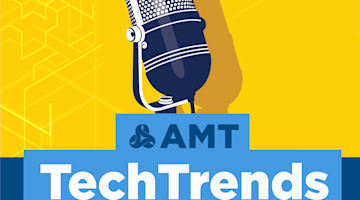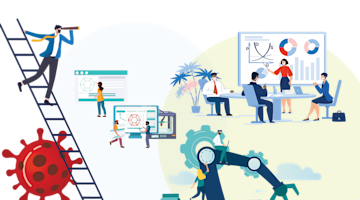When we consider the impact of a particular emerging technology on our worlds, we tend to think linearly about how it will change our lives and our environment. Case in point: the smart phone. If prior to the launch of the Apple iPhone in 2007 someone had explained the concept of the smart phone, we could have brainstormed about the various ways it would have been better than our traditional cell phones. It would make shopping, communicating and consuming information easier.
It’s unlikely we would have envisioned the rise of a multi-billion-dollar app marketplace and the rapid acceleration of digital business models – like Uber/Lyft, Airbnb, Facebook, etc. – owing to the convergence of computing, communications, positioning, photography and much more in a single device. Any one of these digital capabilities is powerful. In combination, they create an incredible platform for innovation and transformation. The challenge becomes envisioning how you and your organization can capitalize on this heady stew of capabilities. That’s really at the heart of digital transformation and Industry 4.0.
Digital twins, our Manufacturing Tech Council spotlight topic for the month of April, are a perfect example of this. Digital twins provide virtual representations of real-world physical assets, manufacturing processes, finished products, etc., and are the offspring of digital enablers like artificial intelligence and machine learning, increasingly smart sensors, IoT, as well as new networking and data handling capabilities. They are enabling new ways of looking at everything we do and everything we work with, and promising vast opportunities for optimizing, streamlining, cutting costs and – to use the beloved phrase of the new-age company – delighting customers.
It’s critical to focus just as much on the ‘twin’ as the ‘digital’ in the name digital twin. The physical and virtual entities are uniquely intertwined. Real-time sensor data from the physical asset or manufacturing process drives the activity and learning of the virtual model, which feeds back predictions, learnings and recommendations that improve the physical model. Over time, this relationship just deepens with more data from which to draw inferences and learnings. Equally important, as the underlying digital technologies improve and advance (smarter sensors, faster networks, improved analytics), the potential power and adaptability of the digital twin expands more than proportionally.
In the case of GE, which has received a great deal of recognition for its initiatives here, digital twins not only helped reduce downtime and predict problems with assets like jet and locomotive engines, and wind turbines, they also created new service revenue streams by enabling data from across a customer base to help individual customers improve operations with GE advice. Equally important, the findings from digital twins are used to improve the manufacturing process so that each generation of product is better than the previous one. (Note: GE’s Vinay Jammu, Technology Leader, Physical-Digital Analytics & Software at GE Global Research, will be our keynote speaker on this month’s webinar.)
The digital twin concept is seductively simple. Create a living, breathing model that can be manipulated and tested against, and from which we can model all sorts of things. The trick – like digital transformation – is figuring out what that means for you and how you can apply the concept to change your business and industry. Digital twins are already being employed to model smart cities and buildings, improved gaming experiences, innovative new retail environments and lots more. Imagine if we all had digital twins of ourselves and could see the impact in real-time of that extra slice of pie or a couple more laps around the block. (Probably not that far off, whether we want it or not!)
In our webinar, we’ll explore how manufacturing organizations are already capitalizing on digital twins, and we’ll share some technology that makes it easier to build and deploy digital twins. The hard part, which is the same as the exciting part, will be brainstorming about where this digitally-enabled tool can take you.
Interested in more content like this? Learn more about our Manufacturing Tech Council.




